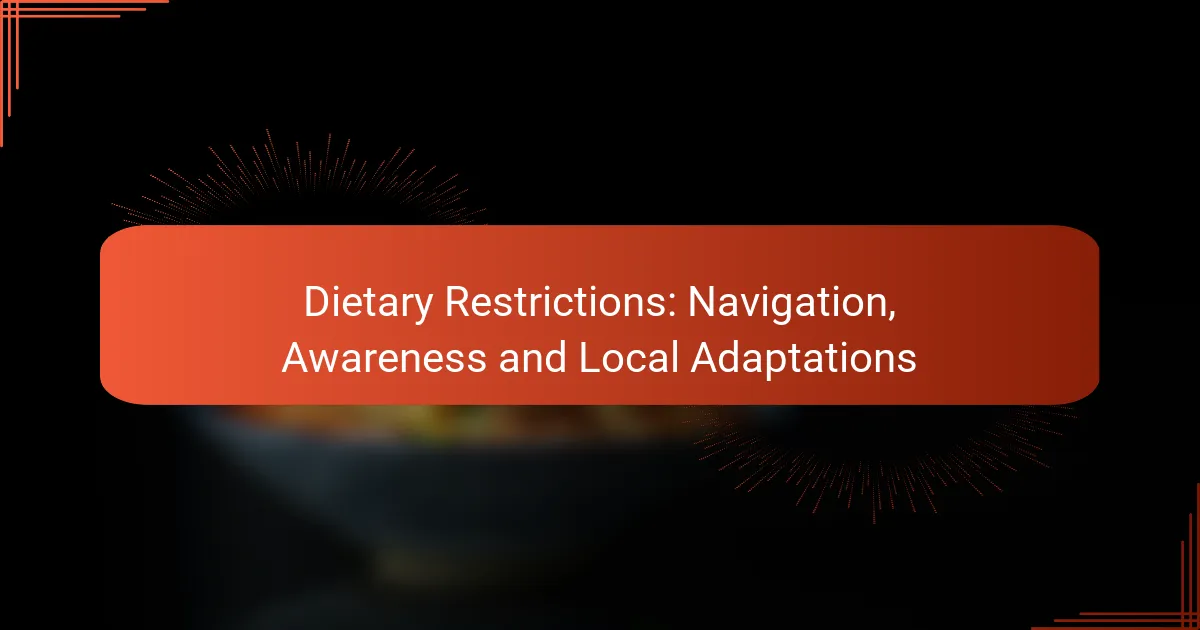Business meeting etiquette is essential for fostering collaboration and maintaining professionalism in the workplace. Understanding the protocols, expectations, and local practices can significantly enhance communication and strengthen relationships among attendees. Proper preparation and awareness of common pitfalls are crucial for ensuring productive and respectful interactions during meetings.

What are the key business meeting etiquette practices in the United States?
In the United States, key business meeting etiquette practices emphasize punctuality, professionalism, and effective communication. Understanding these practices can enhance collaboration and foster positive relationships in a business environment.
Respect for time
Time is highly valued in American business culture, and meetings typically start and end on schedule. Arriving on time is crucial; being late can be seen as disrespectful and unprofessional. Aim to arrive a few minutes early to prepare and settle in.
Meetings are often structured with a clear agenda, and sticking to this agenda is essential. If discussions run over time, be mindful of participants’ schedules and try to address key points efficiently.
Formal greetings
Formal greetings set a professional tone for meetings. A firm handshake is a common practice when meeting someone for the first time, accompanied by a polite introduction that includes your name and title. Maintain eye contact to convey confidence and engagement.
Using titles and last names until invited to use first names is advisable, especially in initial meetings. This shows respect and professionalism, which are highly regarded in American business interactions.
Dress code expectations
Dress codes can vary by industry, but business formal or business casual attire is generally expected. In corporate settings, men typically wear suits and ties, while women may opt for tailored dresses or suits. In more casual environments, smart casual attire may be acceptable.
Always consider the company culture and the nature of the meeting when choosing your outfit. When in doubt, it’s better to err on the side of being slightly overdressed than underdressed.
Use of technology
Technology plays a significant role in business meetings, often enhancing communication and collaboration. Laptops, tablets, and smartphones are commonly used for note-taking and sharing information. However, it’s important to use these devices respectfully.
During meetings, keep your phone on silent and avoid texting or browsing the internet, as this can be perceived as disengagement. If using technology for presentations, ensure all devices are functioning properly beforehand to avoid disruptions.
Follow-up protocols
Following up after a meeting is a critical aspect of American business etiquette. Sending a thank-you email to participants can reinforce relationships and clarify any action items discussed. This should be done within 24 hours of the meeting.
In your follow-up, summarize key points and outline any agreed-upon next steps. This not only demonstrates professionalism but also helps ensure accountability and keeps projects moving forward.

How to prepare for a business meeting?
Preparing for a business meeting involves understanding the attendees, defining objectives, gathering materials, and practicing your presentation. Effective preparation can enhance communication and ensure that the meeting achieves its goals.
Research attendees
Understanding who will be present at the meeting is crucial. Research attendees’ roles, backgrounds, and interests to tailor your approach and foster meaningful discussions. Use platforms like LinkedIn to gather insights on their professional experience and expertise.
Consider cultural differences as well. For instance, in some countries, hierarchy plays a significant role in business interactions, while in others, a more egalitarian approach is preferred. Knowing this can help you navigate the meeting dynamics effectively.
Set clear objectives
Clearly defined objectives guide the meeting’s direction and purpose. Identify what you want to achieve, whether it’s making a decision, brainstorming ideas, or providing updates. Aim for 2-3 specific goals to keep the meeting focused and productive.
Communicate these objectives to attendees beforehand to ensure everyone is aligned. This preparation can lead to more engaged participants and a more efficient use of time during the meeting.
Prepare necessary materials
Gather all relevant documents, presentations, and data that support your meeting objectives. This may include reports, charts, or proposals that will be discussed. Organize these materials in a logical order to facilitate smooth transitions during the meeting.
Consider using digital tools to share materials in advance, allowing attendees to review them before the meeting. This can lead to more informed discussions and reduce the time spent on explanations during the meeting itself.
Practice your presentation
Rehearsing your presentation helps you deliver your message confidently and clearly. Practice in front of a mirror or with a colleague to refine your delivery and timing. Aim for a concise presentation that respects the time of all attendees.
Be prepared for questions and discussions. Anticipate potential queries and think through your responses. This preparation will help you engage more effectively and demonstrate your expertise during the meeting.

What are common mistakes to avoid in business meetings?
Common mistakes in business meetings can hinder productivity and damage professional relationships. Key errors include interrupting others, being unprepared, overusing jargon, and ignoring cultural differences.
Interrupting others
Interrupting colleagues during a meeting can disrupt the flow of conversation and lead to misunderstandings. It’s essential to allow others to finish their thoughts before responding, as this promotes a respectful and collaborative environment.
To avoid interruptions, practice active listening. Take notes while others speak, which can help you formulate your response without cutting them off. A good rule of thumb is to wait until someone has paused for a few seconds before contributing.
Being unprepared
Entering a meeting unprepared can waste time and diminish your credibility. Preparation involves reviewing the agenda, understanding the topics to be discussed, and being ready to contribute meaningfully.
To ensure you are prepared, allocate time before the meeting to gather relevant information and formulate your points. A checklist of key topics can help you stay focused and organized, making your contributions more impactful.
Overusing jargon
Using excessive jargon can alienate participants who may not be familiar with specific terms or industry language. Clear communication is vital for effective collaboration, so aim for simplicity in your language.
When discussing complex ideas, consider breaking down jargon into layman’s terms or providing brief explanations. This approach fosters inclusivity and ensures everyone understands the conversation, regardless of their background.
Ignoring cultural differences
Disregarding cultural differences can lead to miscommunication and offense in international meetings. Each culture has its own norms regarding communication styles, decision-making processes, and meeting etiquette.
To navigate cultural differences effectively, research the backgrounds of your meeting participants. Being aware of customs, such as greeting styles or the importance of hierarchy, can enhance mutual respect and understanding during discussions.

How does business meeting etiquette differ in Europe?
Business meeting etiquette in Europe varies significantly across countries, influenced by cultural norms and practices. Understanding these differences is crucial for effective communication and relationship-building in a professional setting.
Emphasis on hierarchy
In many European countries, such as Germany and France, there is a strong emphasis on hierarchy within business meetings. Seniority often dictates the flow of conversation, with higher-ranking individuals expected to lead discussions and make final decisions.
In contrast, Nordic countries like Sweden and Denmark tend to favor a more egalitarian approach, encouraging open dialogue regardless of rank. Recognizing these distinctions can help you navigate meetings more effectively.
Different greeting customs
Greeting customs in Europe can vary widely. In countries like Italy and Spain, a firm handshake is common, often accompanied by direct eye contact. In contrast, in some Eastern European nations, a more reserved approach may be preferred, with greetings being less formal.
Additionally, addressing colleagues by their titles and surnames is customary in many regions, particularly in Germany. Familiarity may be welcomed in more casual settings, but it’s best to start formally until invited to use first names.
Varied dress codes
Dress codes for business meetings in Europe can differ significantly by country and industry. In the UK and France, business attire is typically formal, with suits and ties being the norm for men and professional dresses or suits for women.
Conversely, in countries like Italy, while formal attire is common, there is often a greater emphasis on fashion and personal style. Understanding the local expectations can help you make a positive impression.
Meeting duration expectations
The expected duration of business meetings in Europe can vary. In Southern European countries, meetings may be longer and more social, often lasting over an hour, while in Northern Europe, meetings tend to be more concise, typically lasting around 30 to 60 minutes.
It’s advisable to prepare for meetings to run longer in cultures that value relationship-building, while being succinct and to the point is appreciated in more time-conscious regions. Always confirm the expected duration beforehand to respect everyone’s time.

What are the benefits of following proper meeting etiquette?
Following proper meeting etiquette enhances professionalism and fosters a productive environment. It helps participants communicate effectively, respect each other’s time, and achieve meeting objectives efficiently.
Improved communication
Proper meeting etiquette significantly improves communication among participants. When everyone adheres to established protocols, such as speaking one at a time and actively listening, misunderstandings are minimized, and discussions become more constructive.
Clear communication is facilitated by setting an agenda in advance and sticking to it. This ensures that all relevant topics are covered and allows participants to prepare adequately, leading to more informed contributions and discussions.
To enhance communication, consider implementing a few best practices: encourage open dialogue, use visual aids when necessary, and summarize key points at the end of the meeting. These steps can help reinforce understanding and ensure that everyone is on the same page.



